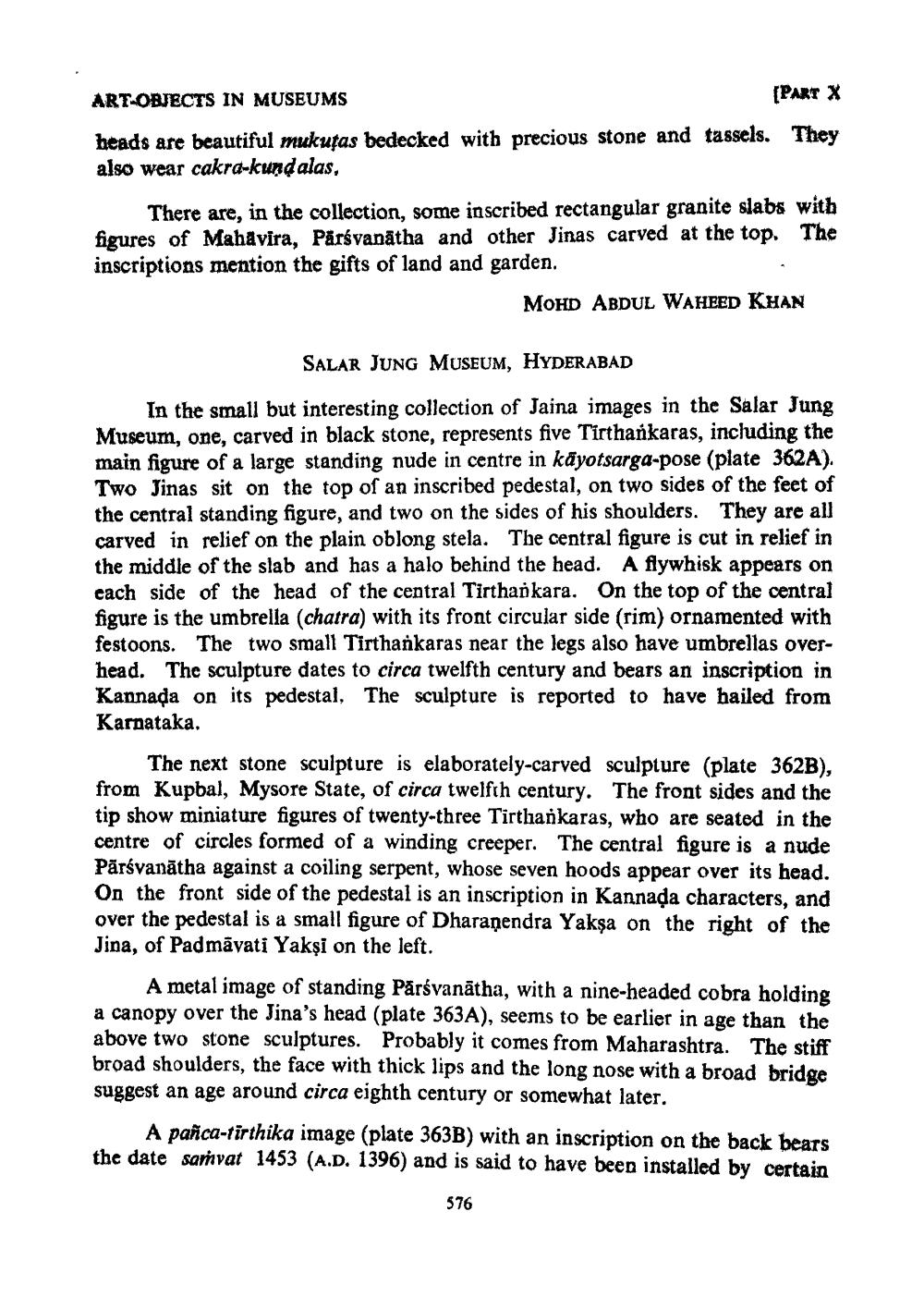________________
ART-OBJECTS IN MUSEUMS
[PART X
They
heads are beautiful mukutas bedecked with precious stone and tassels. also wear cakra-kund alas,
There are, in the collection, some inscribed rectangular granite slabs with figures of Mahavira, Pärsvanātha and other Jinas carved at the top. The inscriptions mention the gifts of land and garden.
MOHD ABDUL WAHEED KHAN
SALAR JUNG MUSEUM, HYDERABAD
In the small but interesting collection of Jaina images in the Salar Jung Museum, one, carved in black stone, represents five Tirthankaras, including the main figure of a large standing nude in centre in kāyotsarga-pose (plate 362A). Two Jinas sit on the top of an inscribed pedestal, on two sides of the feet of the central standing figure, and two on the sides of his shoulders. They are all carved in relief on the plain oblong stela. The central figure is cut in relief in the middle of the slab and has a halo behind the head. A flywhisk appears on each side of the head of the central Tirtharkara. On the top of the central figure is the umbrella (chatra) with its front circular side (rim) ornamented with festoons. The two small Tirthankaras near the legs also have umbrellas overhead. The sculpture dates to circa twelfth century and bears an inscription in Kannada on its pedestal, The sculpture is reported to have hailed from Karnataka.
The next stone sculpture is elaborately-carved sculpture (plate 362B), from Kupbal, Mysore State, of circa twelfth century. The front sides and the tip show miniature figures of twenty-three Tirtharkaras, who are seated in the centre of circles formed of a winding creeper. The central figure is a nude Pārsvanātha against a coiling serpent, whose seven hoods appear over its head. On the front side of the pedestal is an inscription in Kannada characters, and over the pedestal is a small figure of Dharanendra Yaksa on the right of the Jina, of Padmāyati Yakşi on the left.
A metal image of standing Pārsvanātha, with a nine-headed cobra holding a canopy over the Jina's head (plate 363A), seems to be earlier in age than the above two stone sculptures. Probably it comes from Maharashtra. The stiff broad shoulders, the face with thick lips and the long nose with a broad bridge suggest an age around circa eighth century or somewhat later.
A pañca-firthika image (plate 363B) with an inscription on the back bears the date samvat 1453 (A.D. 1396) and is said to have been installed by certain
576




